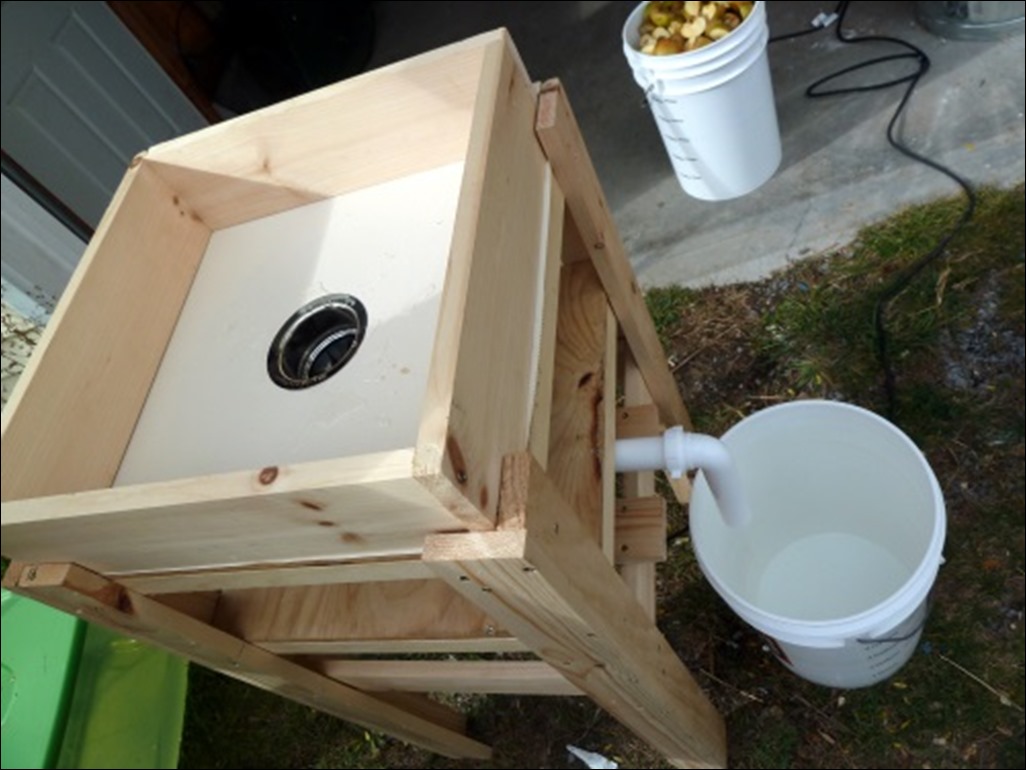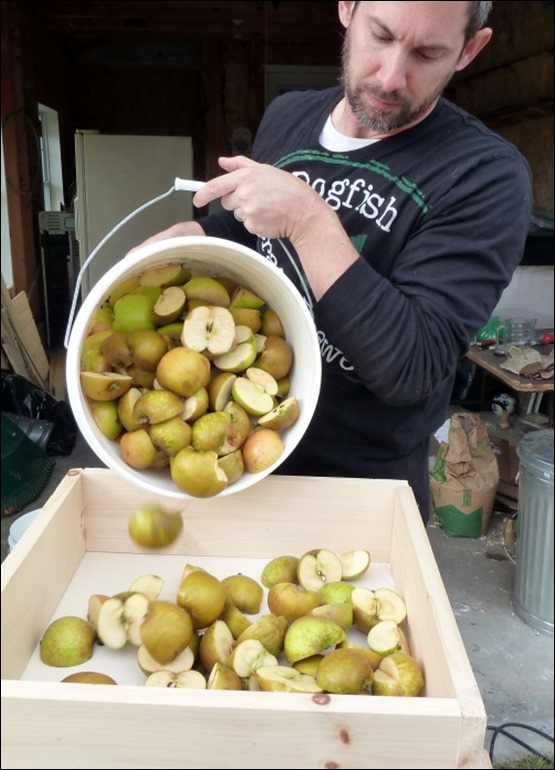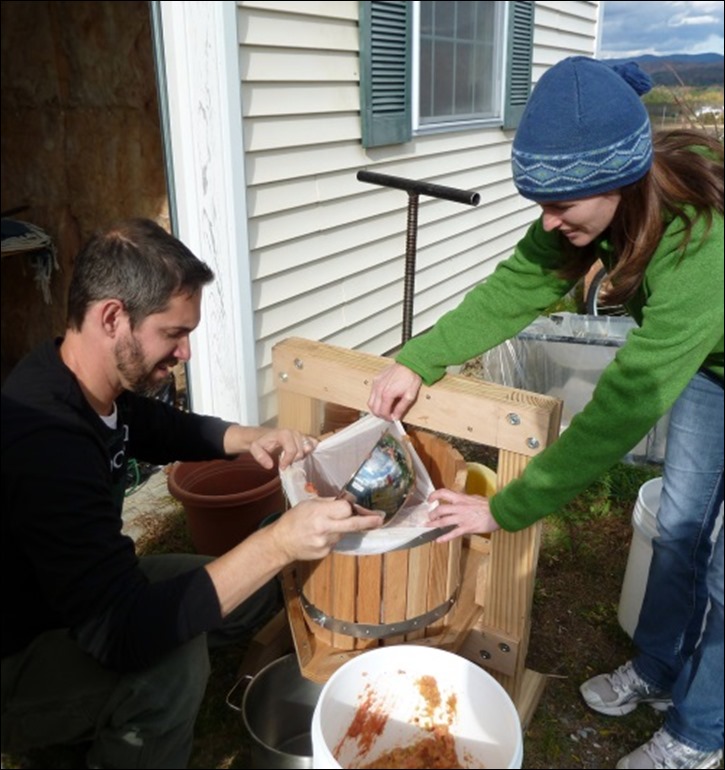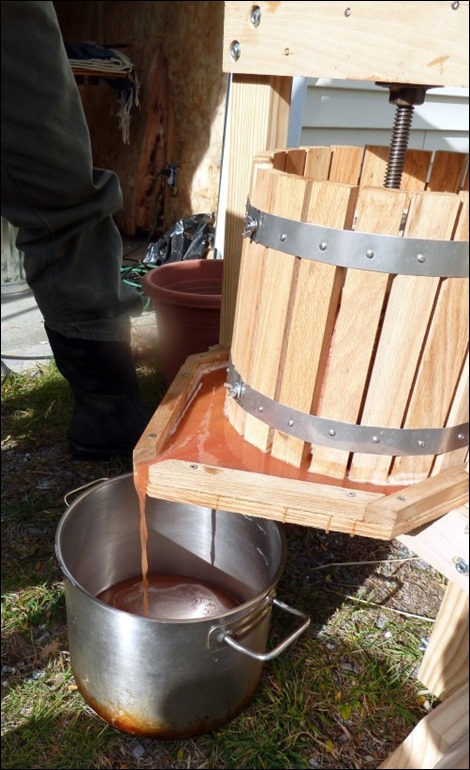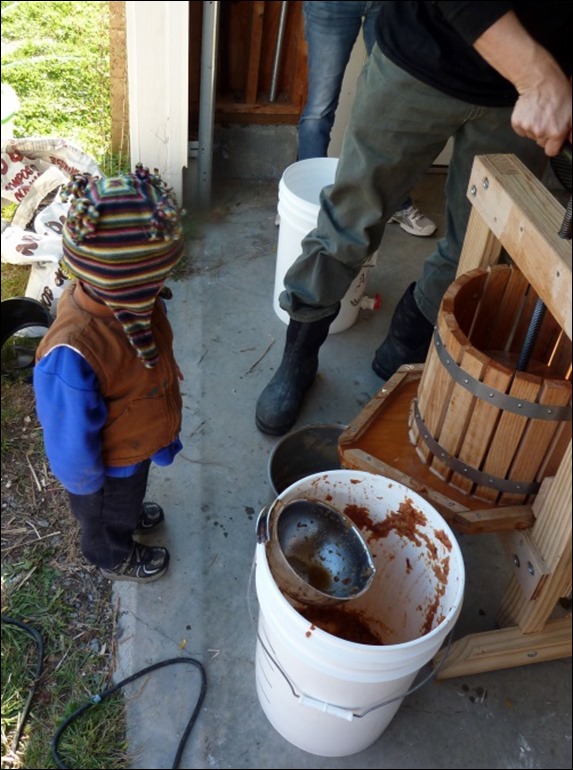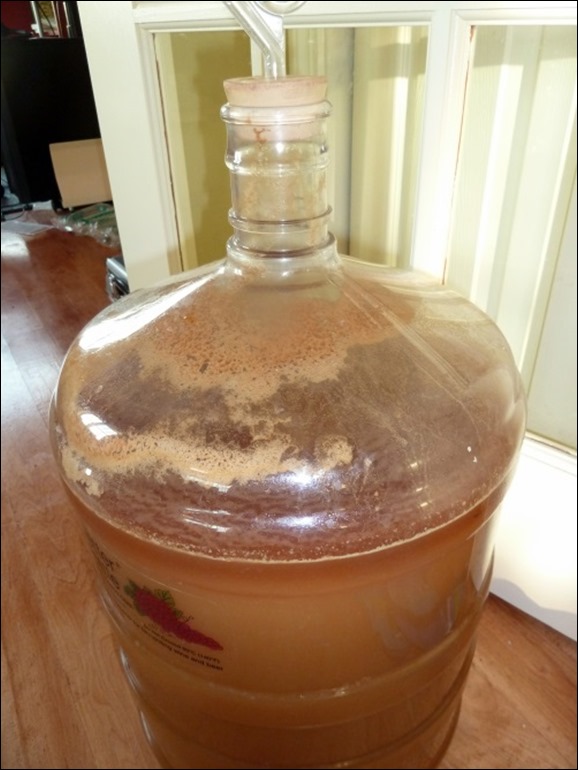After last year’s experiments with cider, I wanted to ramp things up a bit and get a better process. I’ve had plans for Herrick Kimball’s Whizbang Apple Grinder for awhile now, which basically repurposes a sink garbage disposal with a better motor in order to make a great apple mash for pressing cider. With all the other new house projects, we were already well into this year’s apple crop before I realized I was running out of time to put together a grinder this year. So I quickly started ordering parts to build the grinder. The grinder itself is not that difficult of a project to put together, once you have the right materials. So I was able to finish that up this past Saturday morning and it looks like this.
On Saturday afternoon, we attended a local CiderFest at Happy Valley Orchard, one of the local orchards where we like to get apples. They have teamed up with Citizen Cider, a local hard cider company and have quite an operation going over there. Super nice folks too, with a well maintained orchard.
I decided to use their drops for my cider and they had them in abundance this weekend, so we decided to go ahead and grab our apples while we strolled through the orchard and sipped on some Citizen Cider. They directed us to the section of the orchard where they have a few heirloom varieties and we scored a nice selection of Russets (probably Roxbury Russet and Golden Russet) as well as a large golden variety (Grimes Golden perhaps) and a few others. We rounded out the base of the cider with Jonagolds, Macs, Red Delicious and Honeycrisps, as well as a few others. We were able to score 2 1/2 bushels in about 20 minutes and many of the drops were in fantastic shape, all for only $4.50 a half bushel bag. Can’t beat that.
Sunday afternoon we started prepping the apples for pressing, which consistent of a quick wash and brush and quartering the apples. This went pretty quickly, considering how many apples we had. We weighed as we went to get a sense for how many apples overall, as well as how many of particular varieties. We threw in some crab apples from a Bristol neighbor’s tree and a few from a tree on our new property. We ended up with about 88 lbs. of apples.
After a brief scare with the grinder that just involved tightening up the shaft coupler, we were off to the races grinding all the apples.
The grinder worked magnificently, chopping apples about as fast as we could push them in.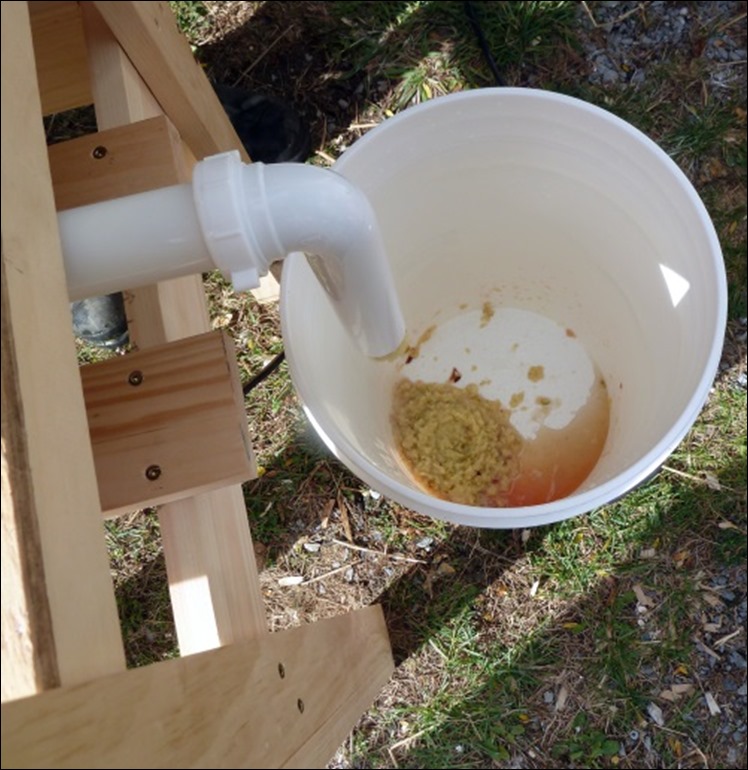
The yield when using this grinder was a night and day difference from our attempts last year, where we used a Cuisinart food processor since we didn’t have anything else. As soon as we loaded the mash into the bag, juice started flowing. Below our friend Christine who is visiting for the weekend helps load the pressing bag.
Check out the lovely flow of cider.
Ezra provided some management and quality assurance.
I was aiming for at least 5 gallons to ferment this year and we blasted well past the goal. I couldn’t believe the great yield we got using this mash. The only thing I want to try different is to use multiple bags with some pressing rounds between them. It’s hard to get enough top pressure even on a half bag to get all the juice out. I was rearranging the bag several times on each press and always got a bunch more juice each time. I did go back and repress after we got our main press done, but I think I could’ve still gotten a bit more.
Still, we ended up with 8 gallons altogether. Along with the 5 gallons which I am fermenting with a pitch of Nottingham ale yeast, I set aside 1 gallon to naturally ferment on the porch and a couple of gallons for drinking. I didn’t go anything this year to kill the wild yeast, so it will be interesting to see what we end up with. The Nottingham should jumpstart the main batch enough to do the bulk of the fermenting. Here’s the carboy full of fresh cider ready to start its journey to the hard side.

